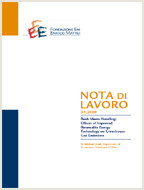Can Numerical Models Estimate Indirect Land-use Change?

09.09.2012
Thierry Brunelle, Patrice Dumas
O13, Q15, Q16, Q17, Q18, D58
Indirect, Land-Use Change, Modelling, Biofuel
Climate Change and Sustainable Development
Carlo Carraro
Motivated by the conclusions from various modelling studies, modifications to the bioenergy sector regulations are under way in Europe and in the USA to account for emissions from indirect land-use change (ILUC). Despite their influence on the policy-making, evaluations of the capacity of numerical models to estimate ILUC are sparse. To address this void, this paper reviews recent developments in land-use modelling, with a particular focus on the solutions adopted to estimate ILUC due to biofuel production. As indirect effects of bioenergy result from the interplay of various mechanisms, their modelling is a major challenge for land-use science. In recent years, numerical models have been significantly upgraded to provide a more comprehensive vision of the agricultural system. This has been performed by improving the representation of land supply and the biofuel production process in general equilibrium models (e.g., GTAP, MIRAGE, DART). At the same time, modelling systems coupling partial equilibrium models with CGE (e.g., KLUM@GTAP) or economic modules with spatially explicit models (e.g., MAgPIE, GLOBIOM, LEITAP), and modelling architecture combining land-use and life-cycle assessment models (e.g., FASOM/FAPRI/GREET) have been developed. In spite of these advances, some limitations remain and uncertainties are still numerous.
